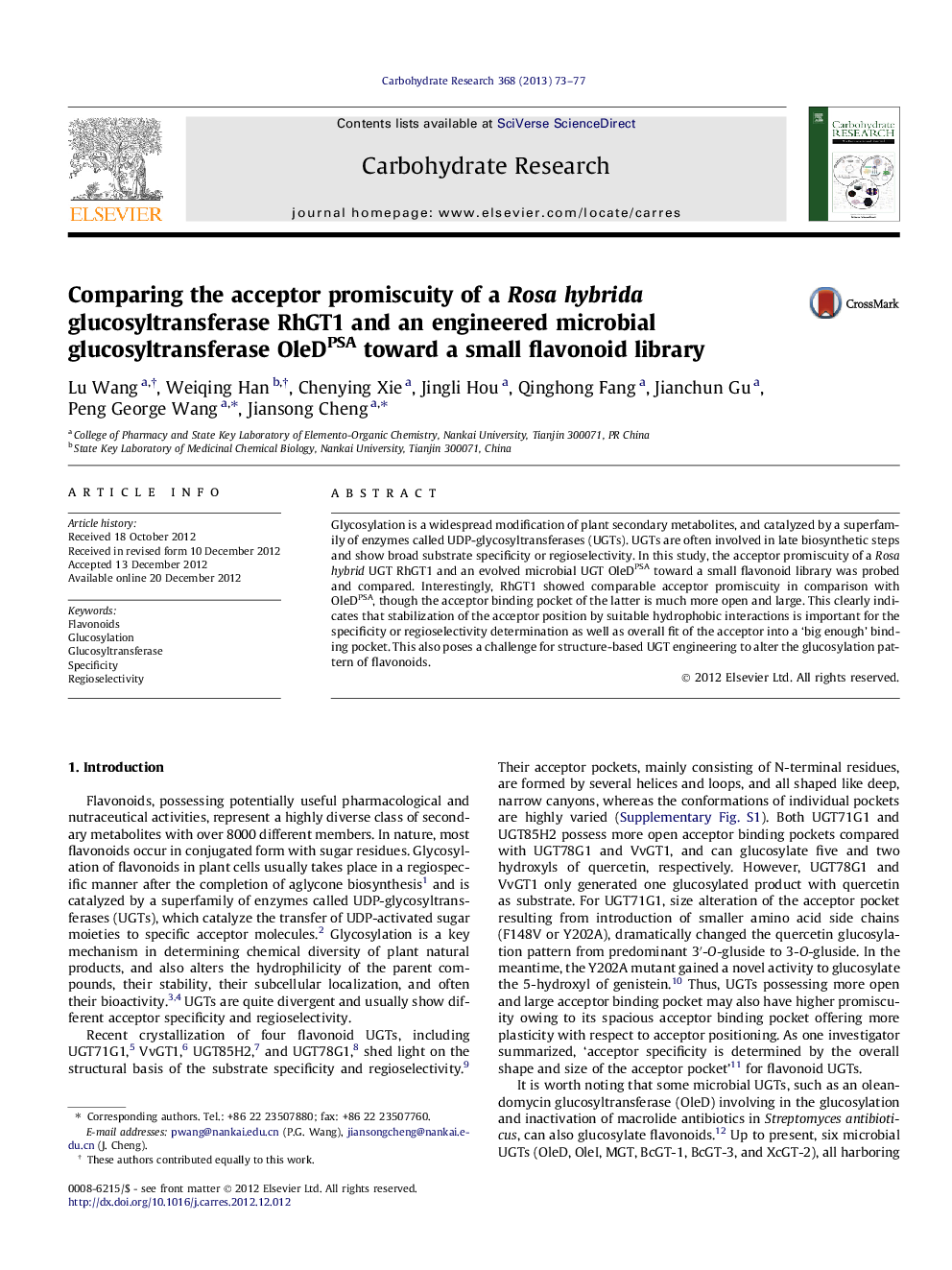| Article ID | Journal | Published Year | Pages | File Type |
|---|---|---|---|---|
| 1390337 | Carbohydrate Research | 2013 | 5 Pages |
Glycosylation is a widespread modification of plant secondary metabolites, and catalyzed by a superfamily of enzymes called UDP-glycosyltransferases (UGTs). UGTs are often involved in late biosynthetic steps and show broad substrate specificity or regioselectivity. In this study, the acceptor promiscuity of a Rosa hybrid UGT RhGT1 and an evolved microbial UGT OleDPSA toward a small flavonoid library was probed and compared. Interestingly, RhGT1 showed comparable acceptor promiscuity in comparison with OleDPSA, though the acceptor binding pocket of the latter is much more open and large. This clearly indicates that stabilization of the acceptor position by suitable hydrophobic interactions is important for the specificity or regioselectivity determination as well as overall fit of the acceptor into a ‘big enough’ binding pocket. This also poses a challenge for structure-based UGT engineering to alter the glucosylation pattern of flavonoids.
Graphical abstractFigure optionsDownload full-size imageDownload as PowerPoint slideHighlights► Homology modeling of Rosa hybrida glucosyltransferase (GT) RhGT1. ► Both RhGT1 and OleDPSA harbor a His as catalytic residues. ► The reaction product of OleDPSA with quercetin as substrate was determined by NMR analyses. ► RhGT1 showed comparable acceptor promiscuity in comparison with OleDPSA. ► Neither RhGT1 nor OleDPSA exhibited deglycosylation or reversible reaction.
